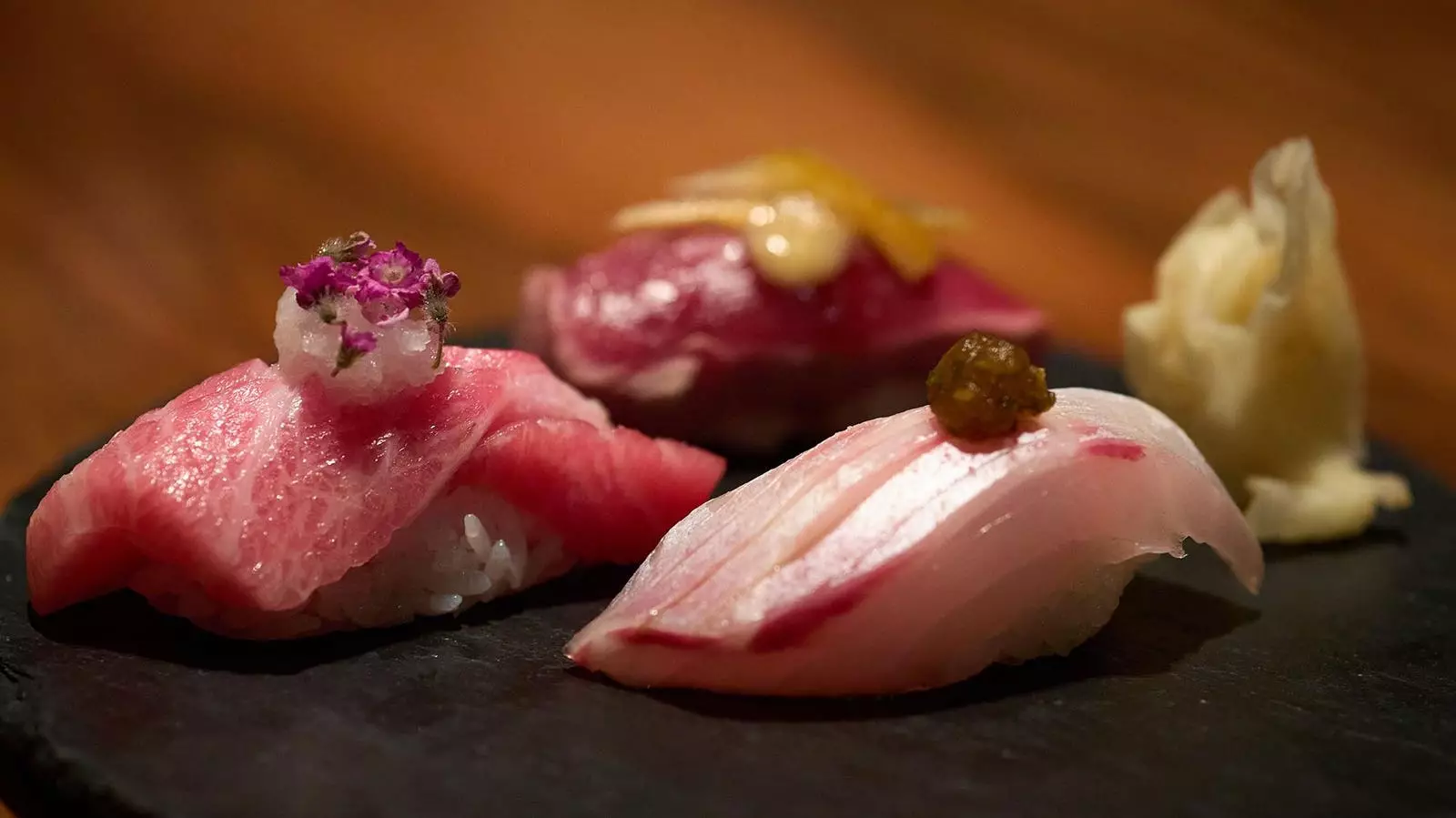Nestled away on Bruton Place, a mere stone’s throw away from the lively streets of Oxford Circus, UMU is a hidden gem that has silently thrived for two decades. Despite not being in the spotlight of London’s latest restaurant frenzy, UMU has managed to retain its Michelin star for an impressive eight years – a testament to its enduring quality and consistency. Executive chef Ryo Kamatsu, who has been at the helm for over a decade, reflects on his culinary journey that led him to UMU, from his humble beginnings in Argentina to his rigorous training in Japan. The unassuming entrance of UMU belies the culinary excellence that awaits inside.
Kamatsu’s culinary journey began with a stint in Argentina, where he honed his skills in balancing flavors in an occidental way. His transition to Japan for further training at Kaiseki Ichimonji was a pivotal moment in his career, where he immersed himself in the intricacies of traditional Japanese haute cuisine. The intense 18-month training period at Ichimonji, where every member of the team handled all aspects of the restaurant, laid the foundation for Kamatsu’s approach to perfection in culinary execution.
Before joining UMU, Kamatsu’s career was enriched by various experiences, including co-founding Izakaya Sakabukuro and working at Chizza in Argentina. These experiences exposed him to diverse culinary techniques and flavors, shaping his palate and adding depth to his culinary repertoire. Upon taking the reins at UMU in 2014, Kamatsu continued to build on the restaurant’s established concept of modernized Kaiseki with a focus on top-quality ingredients and approachable flavors. His dedication to evolving the traditional essence of UMU while staying true to its roots in Kyoto cuisine sets the restaurant apart as a beacon of culinary excellence.
With the growing demand for saké in the UK, UMU has placed a greater emphasis on its drink pairings, led by head sake sommelier Ryan Johnson. The meticulous process of pairing individual components of each dish with potential saké options during menu development showcases UMU’s commitment to enhancing the overall dining experience. Johnson’s refined palate and ability to identify hidden flavors in dishes elevate the art of pairing, ensuring that each dish is complemented by the perfect saké selection.
UMU’s dedication to tradition is exemplified in its adherence to the five traditional techniques of raw, steamed, grilled, fried, and simmered, executed with traditional equipment and tools. While maintaining a strong foundation in traditional Japanese culinary practices, UMU also incorporates innovative techniques to enhance and elevate its dishes. The fusion of tradition and innovation sets UMU apart from its peers, showcasing a balance of heritage and creativity in its culinary offerings.
As UMU embarks on its next chapter, Kamatsu’s vision is to continue evolving and training chefs who will carry forward the legacy of Japanese food culture. Beyond the confines of traditional sushi, UMU aims to showcase the diversity and richness of Japanese cuisine through its Kaiseki menu. Each dish at UMU, from the delicate Mukozuke to the hearty Yakimono, offers a unique culinary experience that reflects the restaurant’s dedication to excellence and passion for the art of Japanese cuisine.
UMU epitomizes the harmonious blend of tradition and innovation, executed with precision and unwavering passion. As one steps through the unassuming entrance of UMU, they are greeted with a culinary journey that transcends mere dining – it is a celebration of tradition, creativity, and excellence. It is a testament to UMU’s enduring legacy in London’s vibrant culinary scene, where tradition evolves, and innovation thrives.


Napsat komentář